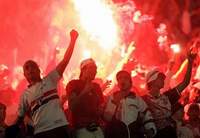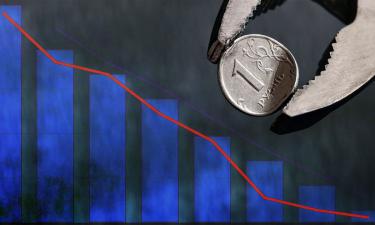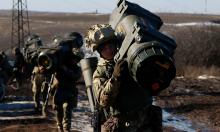The insane drive of football fans depends on which country they come from
Football fans may differ from one another even if they represent the same country. The particular kind of a football event makes a big difference in terms of fans. An average fan at the FIFA World Cup looks more peaceable than his counterpart who is about to attend a match of the League of Champions.

A fan at the football World Cup is unaffected by enmity between the clubs, he normally takes his time. After all, he arrived to watch a number of games. He looks like a mellow tourist wearing garish national uniform. Besides, at the World Cup games the number of middle-aged fans is higher than that of young people because students simply cannot afford to cough up several thousands of euros to pay for the show and lodging.
Because of the above reasons, football fans at the World and European Cups behave peacefully, to some extent. They are mostly driven by patriotism. Aggressiveness and hatred towards strangers seem to be less important motives to them. One of the authors of this article was rudely awaken in the dead of night during the European Cup two years ago in Portugal. Some Russian football fans, apparently under the influence, were singing a very familiar tune outside the hotel on a leafy street in Lisbon. The journalist went to his balcony and looked down. He saw a group of Russian fans marching ostentatiously near the hotel. And they were singing Russia’s national anthem.
However, some of the fans who arrived in Germany for the 2006 World Cup are quite aggressive. Some people can turn into noisy troublemakers after having a few beers. Besides, relations between the fans of some countries are traditionally tense. The British fans are usually considered the most aggressive lovers of a football game. There are about one hundred thousand of them in Germany at the moment. Yet the German fans were the first to stir up trouble at this year’s World Cup. The Germans clashed with the Polish fans in Dortmund last week. About 500 fans took part in the clashes, and nearly all of them ended up in custody. Fortunately, no serious injuries were reported.
Football fans from Latin America cause no problem at all. The fans from Brazil, Argentina, Ecuador are obviously enjoying themselves in a very loud yet harmless way. They just walk about the streets drinking beer and waving national flags. They do not pick on fans from other countries.
On the whole, European fans can pose a greater threat to law and order. We are not talking about the quite Dutch, the reserved Swedish, or the phlegmatic Swiss and indifferent Croats. In fact, the majority of British fans are no longer the cops’ worst nightmare. These days the British do not pick on other fans, they tend to show tolerance towards the police. They seem to have stopped smashing shop windows and cars. On the other hand, the fans from Poland, Spain, and Ukraine took the baton from the hands of the British.
The German police were clearly instructed to put out conflicts in a tough yet humane manner with regard to violent football fans. In other words, the police will not use their truncheons or spray tear gas indiscriminately. The lawbreakers will be simply handcuffed and put on the ground facedown. Quite a few people doubted the effectiveness of such a tactic before it was first used in Dortmund last week. But the most crucial games are yet to come. Time will show whether the German police chose the right way in dealing with violent football fans.
Some characters at the 2006 World Cup really stand out in a multi-colored crowd of football fans. One can show a good deal of skepticism about the reports of one Tsamarependa Naichapii, an allegedly one-of-a-kind shaman from Ecuador, who reportedly had plans for driving out evil spirits from all 12 football arenas before the start of the World Cup. It is still unclear if the shaman did the job in full. But his presence had a beneficial impact on the Ecuadorian national team, which performed very well at the first round of the World Cup.
Every football fan at the Word Cup is supposed to possess a set of needful things deemed a must for a true football enthusiast. The set includes two national flags, two or three horns for making loud sounds, five or six cans of face paint, and a number of official T-shirts and scarves. Most football fans opt to travel empty-handed, and buy paraphernalia on location.
The football lovers who arrived in Germany this year for the 2006 World Cup should be ready to dispense with pretty handsome sums of money. For example, a scarf of the Portuguese national team costs 35 euros in Dusseldorf and Berlin; a scarf of the German national team costs 32 euros in the same city. The scarves of the so-called “black horses”- the national teams of Ecuador and Trinidad & Tobago – are the most costly items: 42 and 48 euros, respectively.
Trud
Translated by Guerman Grachev
Pravda.Ru
Discuss this article on Pravda.Ru English Forum
Subscribe to Pravda.Ru Telegram channel, Facebook, RSS!




